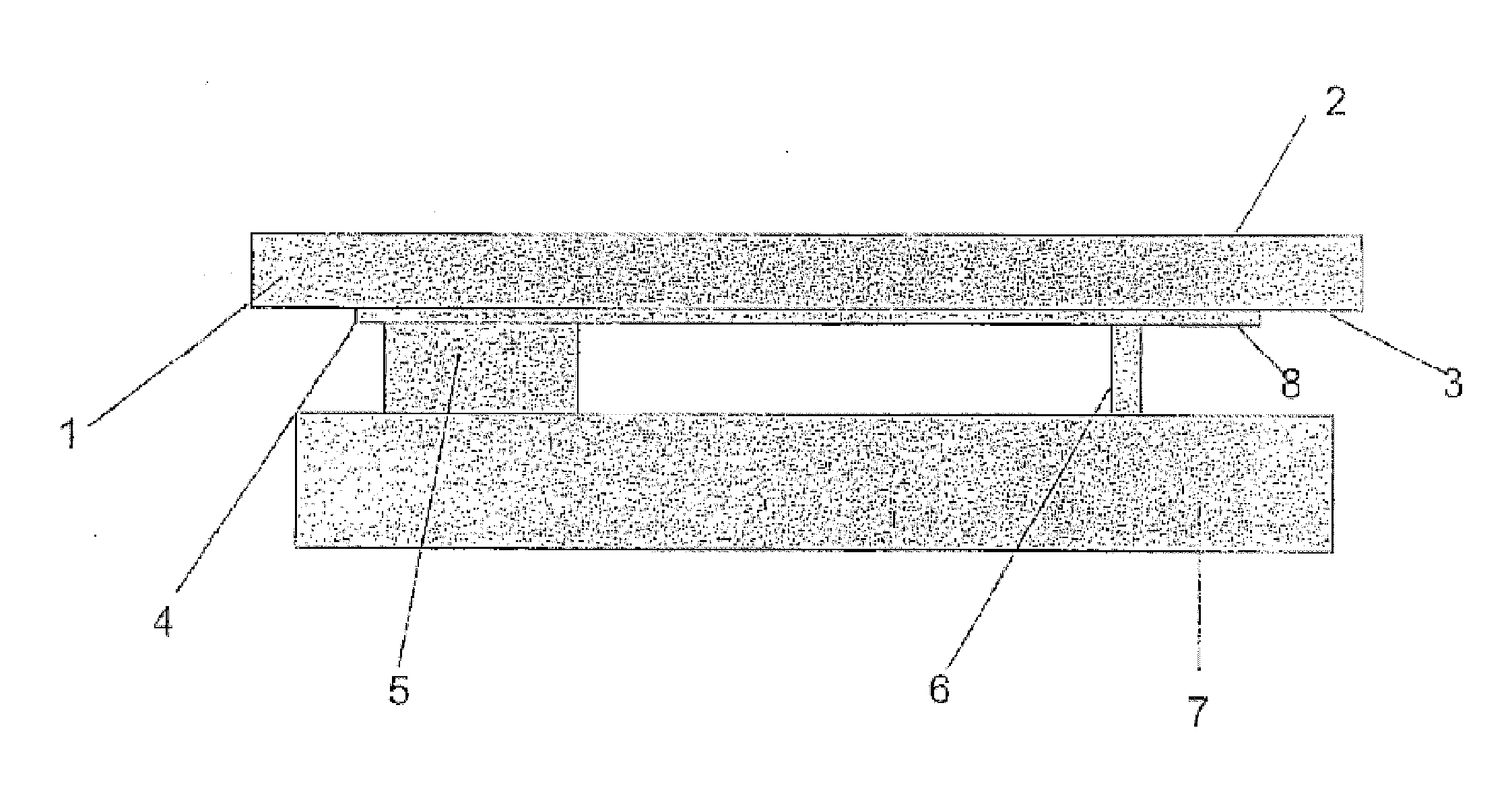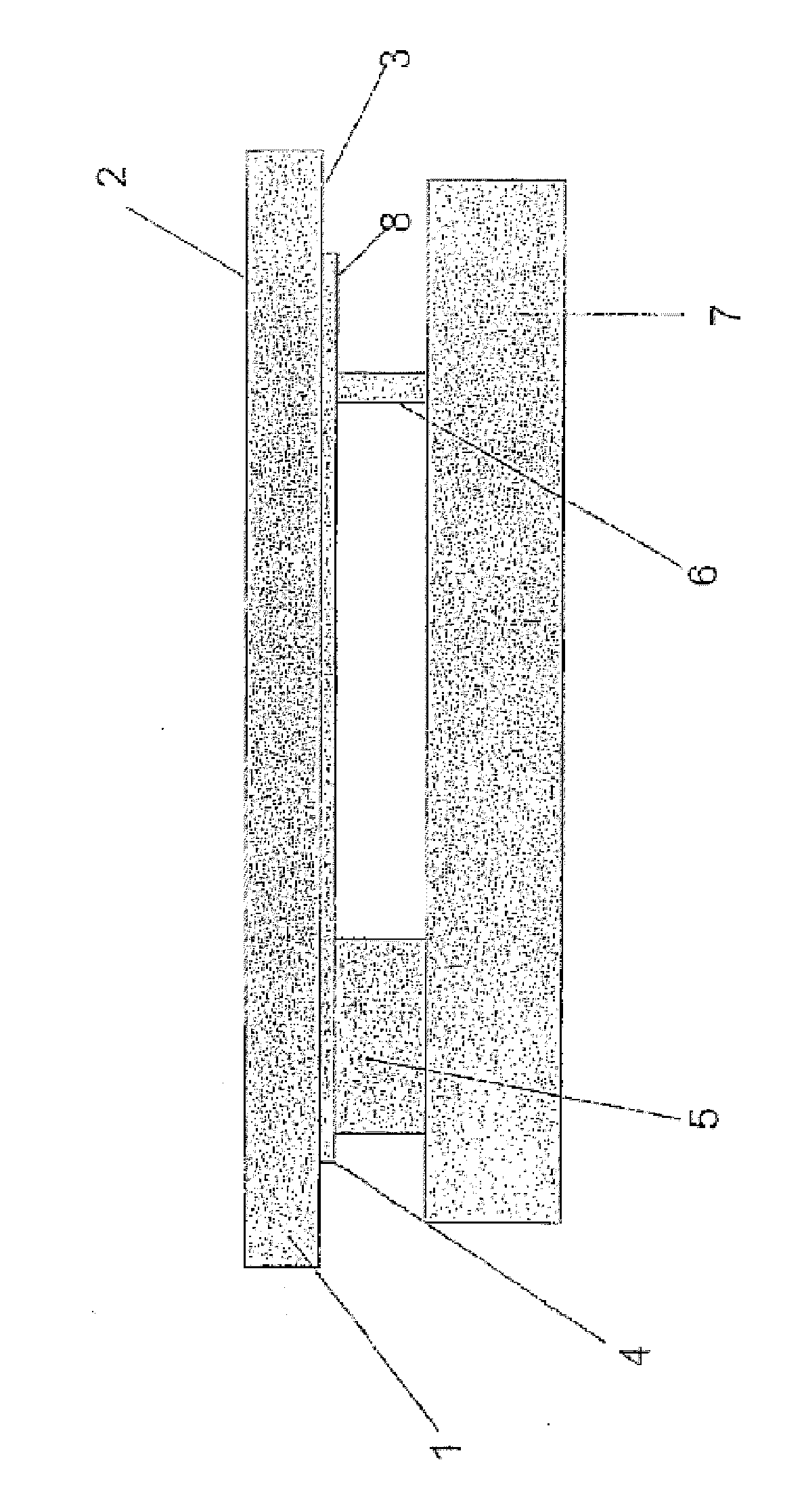High-strength colored glass ceramics as a cooktop, smooth on both sides
a technology of colored glass ceramics and cooktops, applied in the field of glassceramic cooktops, can solve the problems of no indication of obtaining a good display capability, negative effect on display capability, and disadvantages from the point of view of safety and environmental protection, and achieve good sealing
- Summary
- Abstract
- Description
- Claims
- Application Information
AI Technical Summary
Benefits of technology
Problems solved by technology
Method used
Image
Examples
Embodiment Construction
[0054]The invention will be explained in further detail in the following on the basis of the example of embodiment that is shown in the drawing. In schematic representation and in the lateral view, this drawing shows a cooktop 1, which is composed of a glass-ceramic material. Cooktop 1 has an upper side 2 and an underside 3. Both upper side 2 as well as underside 3 are formed smooth approximately with the same surface structure. This means that, in particular, underside 3 does not have the usual periodically repeating knobby structures. Therefore, upper side 2 and underside 3 form two coplanar surfaces. A coating 4 and / or a film 4 is introduced on underside 3. Here, for example, a screen printing method, a sputtering or an injection molding method can be used. Coating 4 is formed here by a transparent material. A light-emitting element 5, for example an LED, is coupled to cooktop 1 on back side 8. This light-emitting element 5 passes its light through coating 4 and through cooktop 1...
PUM
| Property | Measurement | Unit |
|---|---|---|
| transmittance | aaaaa | aaaaa |
| transmittance | aaaaa | aaaaa |
| thickness | aaaaa | aaaaa |
Abstract
Description
Claims
Application Information
 Login to View More
Login to View More - R&D
- Intellectual Property
- Life Sciences
- Materials
- Tech Scout
- Unparalleled Data Quality
- Higher Quality Content
- 60% Fewer Hallucinations
Browse by: Latest US Patents, China's latest patents, Technical Efficacy Thesaurus, Application Domain, Technology Topic, Popular Technical Reports.
© 2025 PatSnap. All rights reserved.Legal|Privacy policy|Modern Slavery Act Transparency Statement|Sitemap|About US| Contact US: help@patsnap.com


